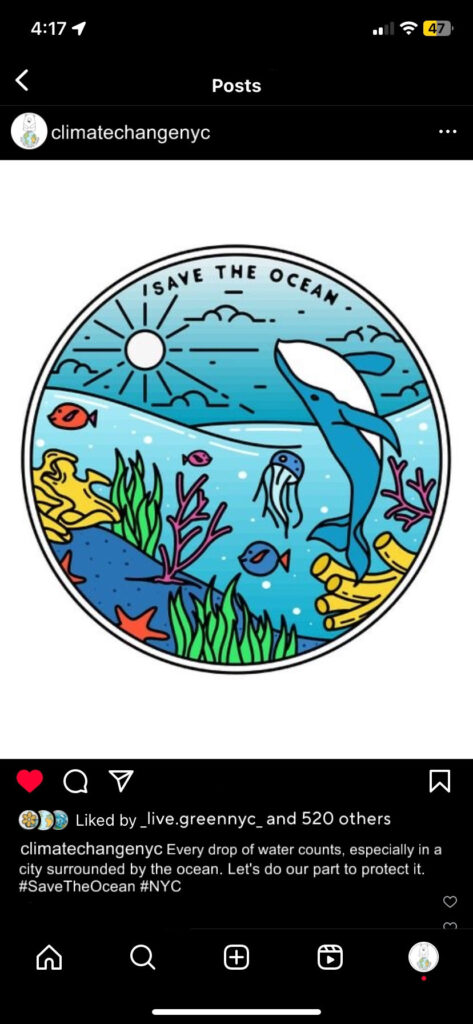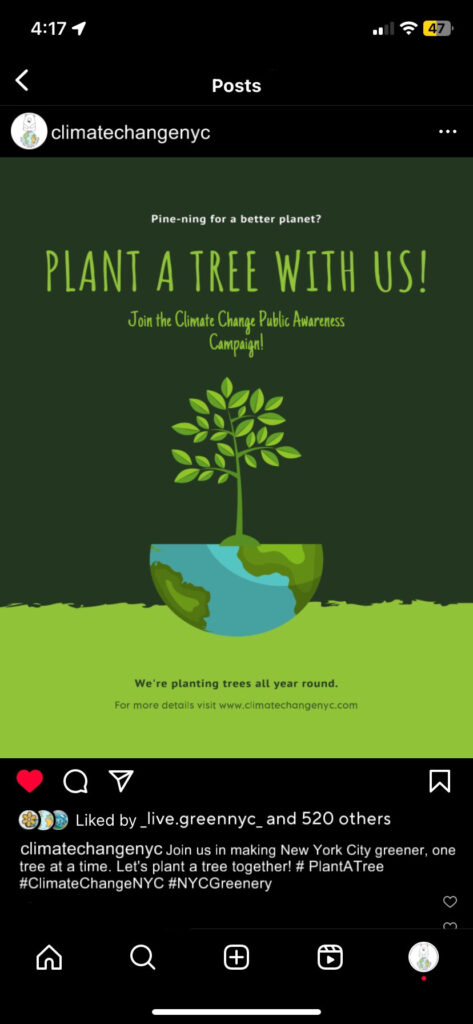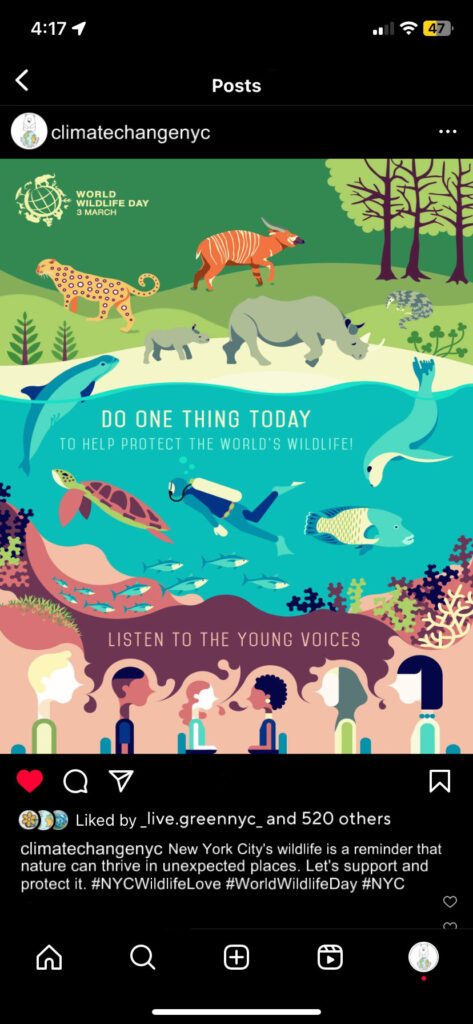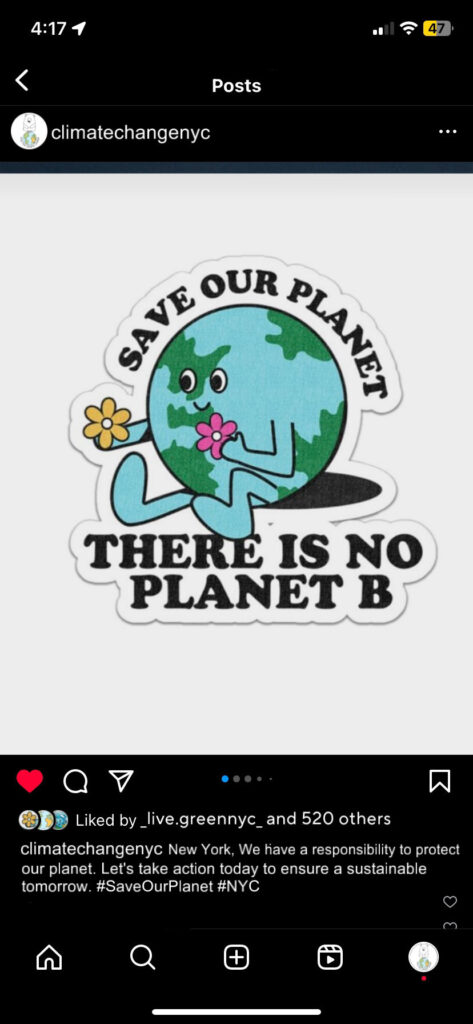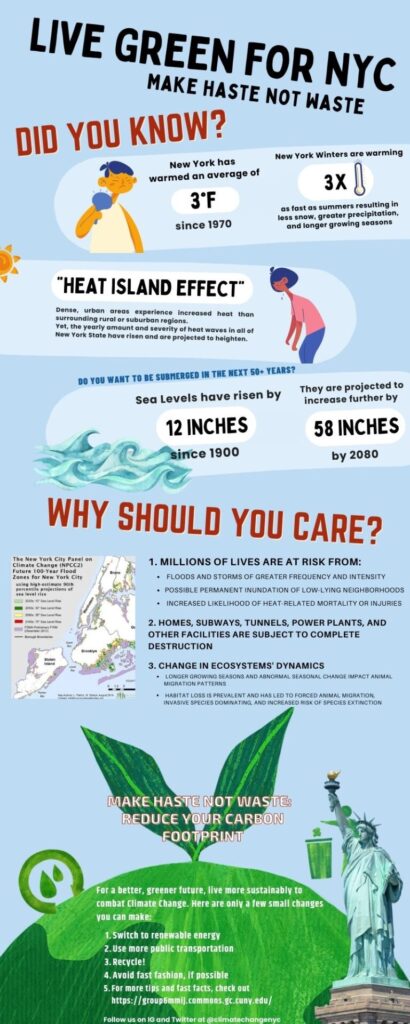
Threats of Sea Levels Rise (SLR)
Infographic

Multimedia Presentation

Klaus Jacobs is one of the many people that have experienced the effects of climate change in New York. Mr. Jacobs is a Geophysics professor at Columbia University. He has stated that if sea levels continue to rise rapidly in New York by 2050, there would be mass destruction, and, in 2011, Mr. Jacobs boldly said that one-day subway stations in New York would get flooded with hurricanes. Subsequently, when Hurricane Sandy hit in 2012, his prediction was proved correct. Mr. Jacobs experienced intense house flooding during the storm, and thus, more New Yorkers should be aware of what is to come if there is nothing done to avoid climate change.

Blog
Blog posts
Heat Related Mortality in the 20th century
There have been several studies made to show short and long run problems associated with climate change such as, damage to agriculture, reduced labor productivity, and public health effects. Cold and heat waves are the main factors especially affecting public health, it includes increase in hospitalizations and emergency room visits. Low birth weight and short gestation was responsible for 20% of deaths for infants 1 year old in 2011 in New York City.
The urban population in New York City is 8.4 million and the temperature increased by approximately 1.5 °C between 1901 and 2011, which is greater than global and US national trends. New York is highly exposed to the effects of high temperatures due to its dense population. In 1896 it was reported that 1500 people died after a prolonged heat wave in the city.

Threats of Sea Levels Rise (SLR)
New York’s coastal populations and infrastructures are in danger due to the cause of climate change effects on sea levels rising up. It leads to storms and floods of greater intensity and frequency. This phenomenon results from numerous events, including changes in ocean currents, massive ice sheet and glacier loss, and thermal expansion, a process in which the ocean’s volume increases due to its warmer temperatures.
Coastal zones of major regions of New York and the metropolitan area, as well as their vital structures, including international airports and local transit and communication systems, have become highly vulnerable and subject to immense damage.

Effects on New York’s Environment
Climate impacts in the environment especially in New York city are becoming crucial and not something to be ignored. The increasing global temperatures are already having negative impacts in the City such as storms, flooding and high heat temperatures. These changes in temperature have been occurring since 1948 to 2008, and previous studies have shown that precipitation increased, cooler days and nights decreased.
Also, the changes in the environment show that the seasons for New York have changed in ways where some are larger than others or the time they are supposed to take in order to change. Water which is one of the most important resources is being threatened in the state of New York by harmful contaminants and crumbling infrastructure.
Pedestrians walk in Brooklyn on an unseasonably warm afternoon in February 2017, when temperatures reached near 60 degrees. To take action against climate change, New York City is requiring large buildings to retrofit their structures to improve energy efficiency.Pedestrians walk in Brooklyn on an unseasonably warm afternoon in February 2017, when temperatures reached near 60 degrees. To take action against climate change, New York City is requiring large buildings to retrofit their structures to improve energy efficiencyPedestrians walk in Brooklyn on an unseasonably warm afternoon in February 2017, when temperatures reached near 60 degrees. To take action against climate change, New York City is requiring large buildings to retrofit their structures to improve energy efficiency.
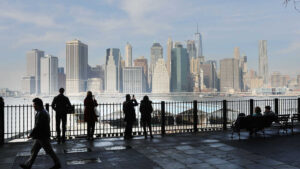
Climate change is affecting animal populations in New York due to rising temperatures, changing precipitation patterns, and extreme weather events. Migratory movements of many species, including birds and butterflies, are influenced by seasonal variations. If weather patterns change, it would be a threat to their survival.
“Species that are adapted for warm temperatures or warmer waters are extending their range, as habitat for species favoring cooler temperatures or waters shrinks. In Long Island Sound, fishermen are now catching scup, black sea bass, summer flounder and northern kingfish, warmer water species that were uncommon years ago when the catch was mainly winter flounder, cod, bluefish and striped bass.” Certain species need a specific cycle on particular environmental cues like temperature and rainfall in order to reproduce. However, if these cycles are disturbed by climate change a decrease of population of these species can occur.

Climate Change shows no Signs of Diminishing
New York City sea levels are projected to increase further, resulting in worsening conditions for those on the waterfront. Hurricane Sandy is one example of a devastating hybrid storm that surged 2.8 meters above average tide due to strong winds, peak storm intensity, and high tide, all occurring simultaneously in the coastal regions of NYC, causing billions of dollars in damage to impacted areas and flooding thousands of homes. And similar events are most likely to happen in the future if nothing is done to stop climate change. In low-lying NYC neighborhoods, even tidal flooding occurs alone without storms present, a phenomenon that has doubled in rate at The Battery since 1950. For New York City sea level projections, the middle range estimate of increase throughout the 2020s is 4-8 inches, while that throughout the 2050s, 2080s, and 2100 is 11-21 inches, 18-39 inches, and 22-50 inches, respectively.
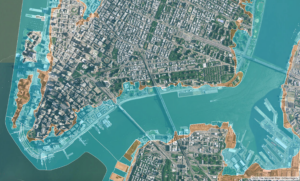
Possible Solutions
It is important to evaluate current sea-related trends and impacts as well as investigate how conditions may worsen in the future. Subsequent findings present the need for greater public awareness of this issue, more effective warning signals and safety protocols for those on the coast, and, ultimately, greater preventative measures to combat climate change and its effects. The NYS should promote policies that will uplift those most vulnerable to climate change impacts. There must be some climate justice in order to stop impacts caused by climate change already having some effects in New York.
The city should also implement more heat warning systems and cooling centers. These measures levels can be of great use once they are functioning.

What is Climate Change?
Climate Change is the phenomenon of global deviations in Earth’s temperature and climate patterns We see it in the way temperatures have been increasing over …
Social Media
Climate Change in New York
Make Haste not Waste
WILD LIFE
Support us by purchasing our climate change apparel!
- 100% recycled content
- 50% upcycled cotton

WILD LIFE
Take support to the next level.
Buy 2 get 1 free!
- The classic design and feel, along with the ultra-softness, will ensure you look and feel amazing in what you’re wearing! 🌎

HOT LOOKS, COOL PLANET, CLOTHING THAT SPEAKS FOR THE EARTH.
FOLLOW US ON INSTAGRAM AND GET ONE STEP CLOSER TO MAKING OUR PLANET SUSTAINABLE

